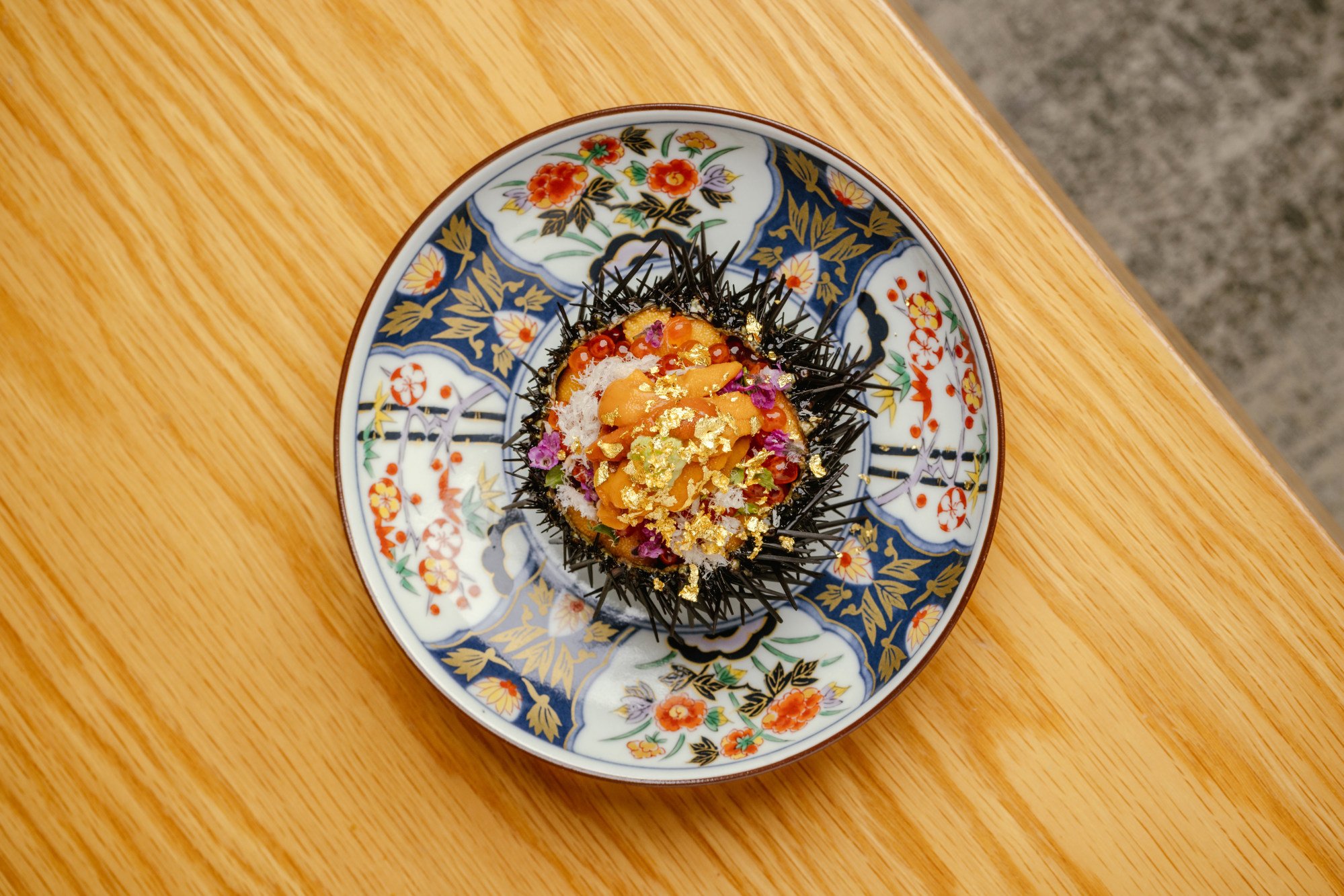
How a sushi chef in Hong Kong is breaking with centuries of tradition to offer a ‘more fun’ omakase experience
- Top sushi restaurants generally follow the Japanese convention of serving light, cool dishes at the start of their omakase menus and heavier, hot ones at the end
- But Sushi Zo’s Michikazu Yoshida has made a menu that radically ‘jumps around’ to keep diners on their toes. We try it as he explains what makes it ‘memorable’
As sure as spring follows winter, the order of items served during a typical sushi omakase meal proceeds from the lightest of flavours – usually in the form of sashimi – to increasingly heavier dishes with stronger aromas, such as tempura and meat.
This tradition is rarely broken by classically trained sushi chefs, in reverence to the art form they have been entrusted to uphold. To break it would be considered sacrilege.
Many of Hong Kong’s famous omakase restaurants follow Edomae tradition – which originated during the Edo period (1603-1868) in what is now Tokyo, and on which most modern sushi is based.

While Sushi Zo, in Hong Kong’s Central neighbourhood, has been in operation for a few years now, its executive chef, Michikazu Yoshida, has recently designed a menu that “jumps around” between mild and strong flavours and hot and cold dishes in a way that distinguishes the restaurant from other omakase places in the city.
Founded in Los Angeles, Sushi Zo has outlets in New York, Bangkok and Hong Kong.
‘We are not affiliated’: top Japanese sushi chef’s war on fishy frauds
“Sushi Zo is not an authentic or traditional Japanese omakase brand, as it is originally from the US, so the design of the up-and-down flow of the Sushi Zo menu gives diners a unique and surprising omakase experience,” Yoshida says.
While the menu at Sushi Zo features a procession of Edomae-style dishes, Yoshida serves all of them – apart from dessert – out of order, to take even the most experienced diners by surprise.
During our hosted dinner, we were served sashimi and then a grilled item, followed by another sashimi dish and then a piece of sushi. As well as the element of surprise, we enjoyed this varied approach because we were less likely to fill up on cold items and so have less room to appreciate the hot items.

One of the latter was sea urchin grilled in its shell under low heat. Whereas fresh uni is usually served as sashimi, Yoshida chose to serve it warm to bring the creamy texture forward, with the sweetness unfolding on the back of the palate.
While traditionally grilled items usually come at the tail end of an omakase meal, the sea urchin was followed by stewed abalone and then three more servings of sushi.
One may assume from this that Yoshida wasn’t classically trained, but his journey to becoming a chef started out like many sushi chefs before him.

“When I was 11 years old, my parents took me to a sushi restaurant and I was captivated by the skill and focus of the sushi chef,” Yoshida says. “I especially found the precision and attention to detail that the chef demonstrated to be particularly impressive.”
He was also touched by their dedication to sushi.
The mild-and-strong, hot-and-cold menu prevents diners from being overwhelmed by increasingly strong flavours
He started by spending over a year cleaning and making tea before being allowed to prepare simple ingredients like hotaru-ika (firefly squid) and shrimp. The experience was tough, but it taught him the importance of hospitality.
It wasn’t until becoming executive chef at Sushi Zo that Yoshida felt he had the freedom to buck tradition.

“Other omakase brands around Hong Kong, as well as my contemporaries, know that Sushi Zo isn’t a traditional Japanese brand and restaurant, and understand that the chefs [and] the restaurant tailor the menus depending on the local diners’ palates,” he says.
“The mild-and-strong, hot-and-cold menu fluctuation prevents diners from being overwhelmed by increasingly strong flavours, and makes it a more fun, memorable and interactive experience.”
While Yoshida is confident in his avant-garde approach to omakase, he is not ready to take on the traditional institution of Edomae-style sushi just yet.
“I am unsure about opening in Tokyo at the moment,” he says. “However, we are looking to expand within Asia in the near future, and the team continues to do research on the palates of Sushi Zo’s potential new clientele.”

